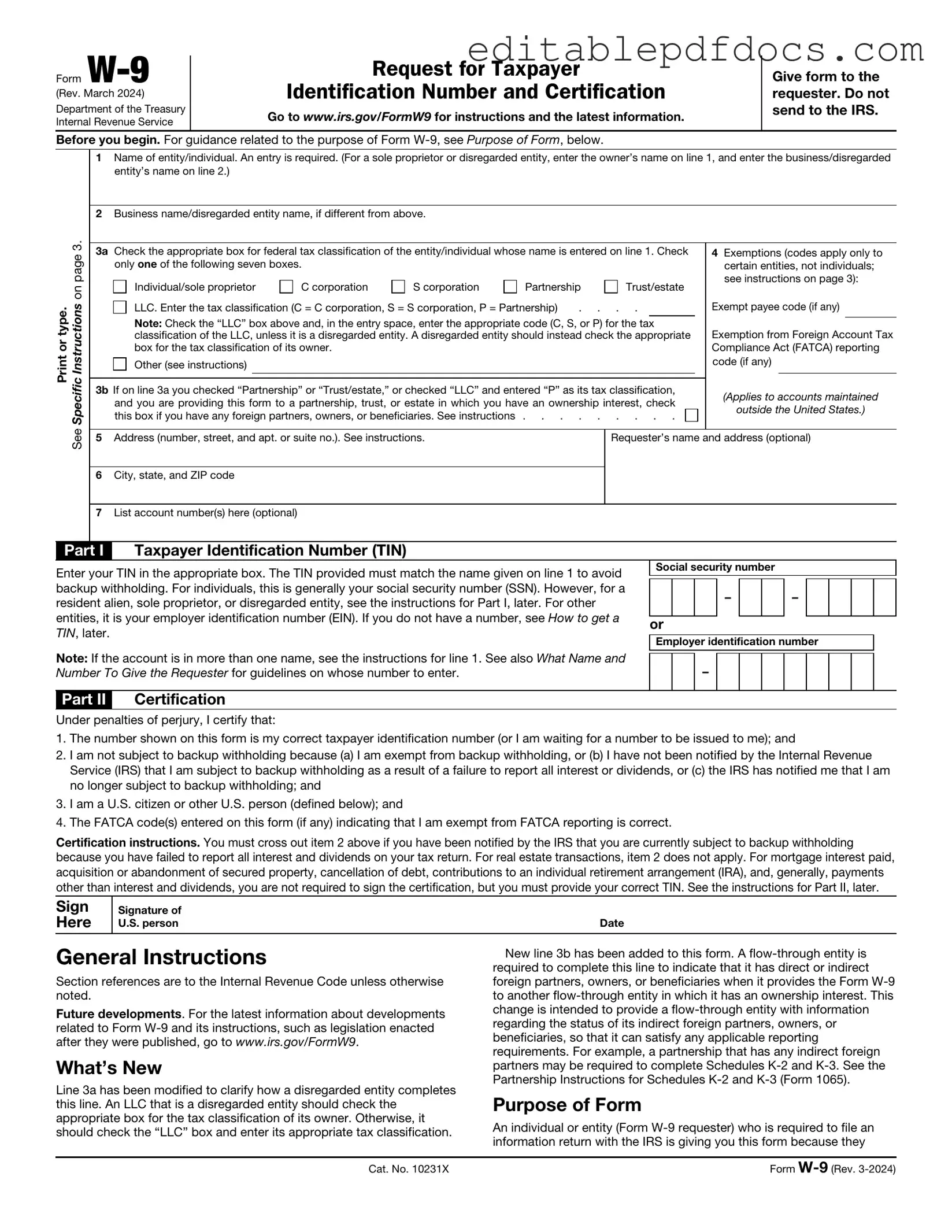The IRS W-9 form plays a crucial role in the financial interactions between individuals and businesses in the United States. This form is primarily used by taxpayers to provide their taxpayer identification information to entities that are required to report certain payments made to them. Commonly, freelancers, independent contractors, and vendors utilize the W-9 to furnish their name, address, and Social Security Number or Employer Identification Number to clients. The information collected on the W-9 is essential for the issuance of Form 1099, which reports income to the Internal Revenue Service. Additionally, the W-9 serves as a means for the requester to confirm that the payee is not subject to backup withholding, an important consideration for both parties involved. Understanding the purpose and proper completion of the W-9 form is vital for ensuring compliance with tax regulations and avoiding potential penalties. Furthermore, the form's straightforward design allows for easy submission, making it accessible for users across various sectors.
